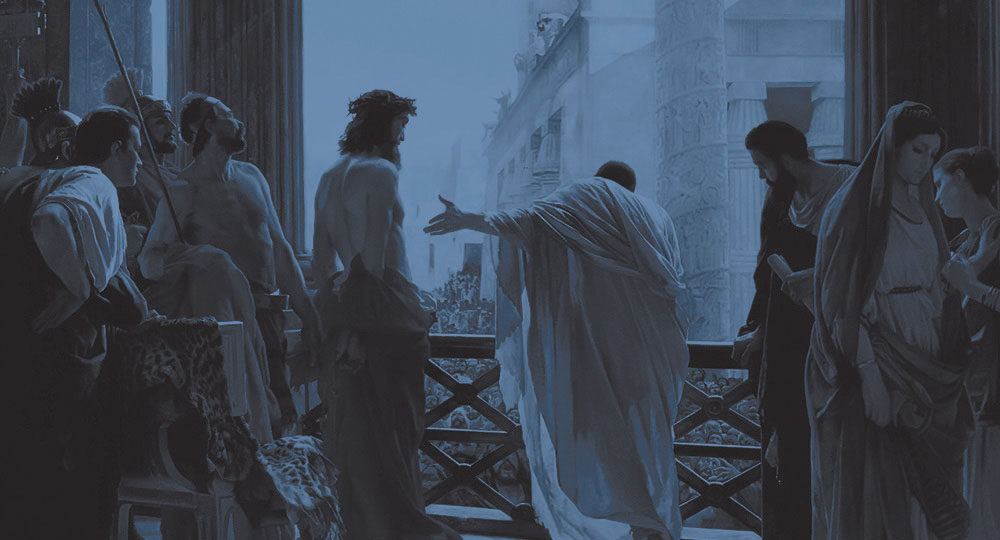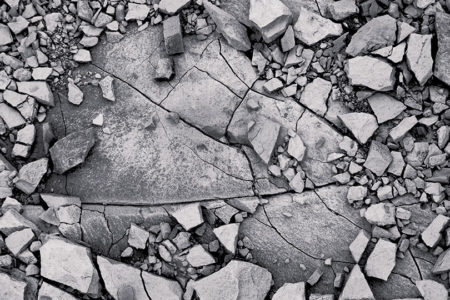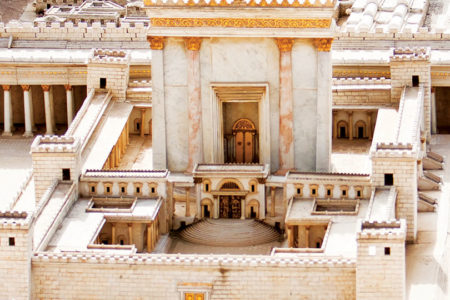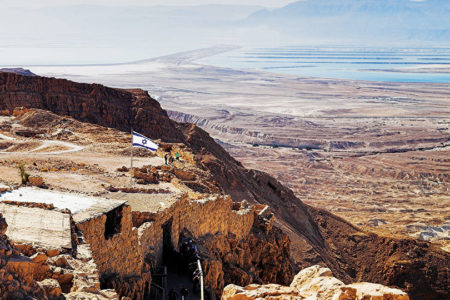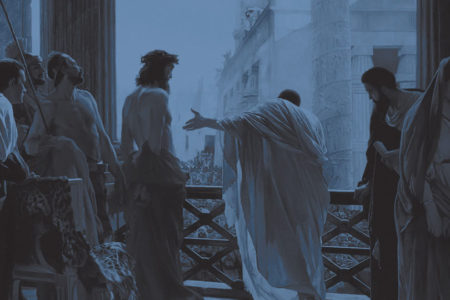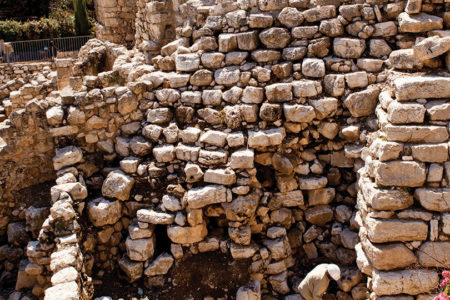The Inquisitors
What Archaeologists have discovered about the graves of the three key officials in Jesus’ trial
At the southeastern end of the old city of Jerusalem lies an impressive series of burial caves. Most date to the time of Jesus. Archaeologists recently have taken a closer look at them and have turned up something fascinating: a postscript to the legacies of Christ’s three inquisitors: Annas, Caiaphas, and Pontius Pilate.
Archaeologists have noticed that some of the caves, one in particular, contain the same intricate, decorative designs as the Jewish Temple. The entrance to one of the main tombs is embellished with tall columns; and the ceiling dome features a beautiful, large, ornately carved rosette. After much investigation, it is now believed that the lavishly decorated tomb was probably the burial cave of Annas, before whom Jesus stood after His arrest (Jn. 18:12–13).
Annas was the patriarch of a powerful Sadducean family. He served as high priest in Jerusalem for 10 years until he was deposed by a Roman procurator. Nevertheless, he exerted his influence over each of his five sons and son-in-law, Caiaphas, who served as his puppet high priests.During Annas’s life, the Jewish people cursed him and his entire family for their corruption and cruelty (Talmud, Pesachim 57a). After Jesus was arrested, He was first brought before Annas, who questioned Him about His disciples and doctrine. It is probable Annas gave the order for a nearby officer to strike Jesus with his hand (Jn. 18:13, 19–23).
What does archaeology say about Annas? His final, lavish resting place for centuries has been used as a garbage dump. Squatters and Bedouins have lodged inside his ornate tomb. Even goats and horses were penned inside. Fires were built there; and the soot has stained and darkened the walls and ceiling, obscuring all the decorative detail.
What a stark contrast to where Jesus was buried. Pilgrims from around the world come to see and remember where Jesus probably was laid and rose again.
It was a cold day in November 1990 when a construction crew accidentally stumbled on a cave many people believe to be Caiaphas’s family burial chamber. Located in a forest preserve south of the Old City, the tomb was a spectacular find.
The chamber contained 12 boxes called ossuaries, used to collect decomposed human skeletal remains. Ossuaries freed a tomb’s ledge to be used again.
THE STONES CRY OUT
Discover how archaeology continues to teach us about biblical history in The Stones Cry Out by Randall Price.
This particular limestone box, believed to contain Caiaphas’s bones, was uniquely decorated and inscribed with his name in Aramaic. His bones reveal he was about 60 years old at the time of his death. After the customary investigation of the bones in all 12 boxes, Caiaphas’s and the others were reburied on the Mount of Olives in a cemetery the Jewish people have used continually for more than 3,000 years. Rabbis believe that when the Messiah comes, He will first resurrect the dead buried there and then enter Jerusalem with them (cf. Zech. 14:4). The Mount of Olives is also where Jesus ascended to heaven and where He is expected to return bodily at His Second Coming (Acts 1:9–11).
The use of ossuaries was considered a reflection of belief in the physical resurrection of the human body. That is why the bones were collected and preserved. However, Scripture states that Caiaphas was a Sadducee. Sadducees did not believe in bodily resurrection (Mk. 12:18; Acts 23:8).
The fact that Caiaphas’s bones were placed in an ossuary and buried on the Mount of Olives is inconsistent with his belief and character, but consistent with the truths taught in Scripture. It was Caiaphas who unknowingly made the astonishing prophecy, “It is expedient for us that one man should die for the people, and not that the whole nation should perish” (Jn. 11:50). Without realizing what he was saying, he articulated God’s plan that Messiah Jesus become the final sacrifice for sin, not only for Israel’s but for that of the whole world (cf. 1 dead—some to life and others to condemnation (Jn. 5:28–29).
It also was Caiaphas who asked Jesus the greatest of all questions:
“I put You under oath by the living God: Tell us if You are the Christ [Messiah], the Son of God!” Jesus said to him, “It is as you said. Nevertheless, I say to you, hereafter you will see the Son of Man sitting at the right hand of the Power, and coming on the clouds of heaven” (Mt. 26:63–64).
Judgment awaits Caiaphas when God raises him from the dead to stand before Him (Rev. 20:11–15).
Most people know the name Pontius Pilate. In the days of Jesus, he was governor of Judea and represented the might of imperial Rome. History, however, literally has trampled on his name.
Between AD 26 and 36, Pilate dedicated a pagan temple in Caesarea to honor Roman Emperor Tiberius. Caesarea, on the Mediterranean coast, served as the Roman capital of Judea.
A dedicatory inscription bearing Pilate’s name was embedded on the temple’s stone wall. It contained four lines in Latin, designed to force the city’s residents to learn and read the imperial language. Eventually, due to the city’s violent history, the temple was destroyed.
The undamaged stones were reused elsewhere, and the inscription was lost until 1961.
An Italian team excavating the city’s Roman theater discovered the inscription. It turned out that this extremely significant stone was being used as a landing step for a flight of stairs to the theater seats. So the only physical evidence of the man who once told Jesus, “I have power to crucify You, and power to release You” (Jn. 19:10) was being walked on for centuries. Restored as much as possible, the inscription is now on display at the Israel Museum in Jerusalem.
Within 40 years after Jesus’ death and resurrection, the house of Annas, with all its power and wealth, was destroyed. Caiaphas was deposed a year after the crucifixion, and Pontius Pilate was banished to Gaul where he committed suicide.
Archaeology has presented the world with a desecrated tomb, dishonored bones, and a disrespected inscription—all tributes to the ignominious legacy of the three inquisitors who dared to interrogate the incarnate God.
Yet Jesus is remembered by countless millions in a much different way, as attested to by the 19th-century hymn “Fairest Lord Jesus”:
Beautiful Savior! Lord of all the nations!
Son of God and Son of Man!
Glory and honor, praise, adoration,
now and forevermore be Thine.
